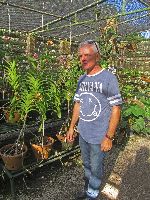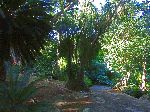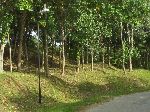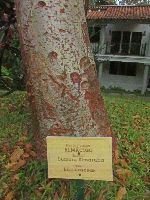| . | ||
Pinar
del Rio
|
||
Sierra |
||
| San Cristobal Hospital: One of the members of our group had collected a cubic yard of medical supplies which were donated to the hospital. Included in the box were sterile gloves. The medical director told us they had finished their supply of gloves that morning so had to stop doing surgeries. Among other things the donation would allow them to continue doing surgeries. There often seems to be some irony with health care in Cuba: They have well trained personnel, they have comprehensive preventative programs, they are leaders in the treatment of some advanced disease, but they can lack some basic supplies that you can find on the shelf in any pharmacy in North America or Europe. | ||
|
The Pinar fault runs from near San Cristobol, southwest 110km through El Corojo and into the Caribbean Sea. The faultís formation resulted from a change of direction in the Caribbean Plateís motion from the north-northeast to the present easterly direction. |
||
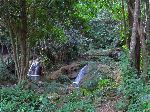 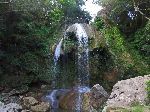 Soroa
Waterfall:
There is a lush and beautiful woodland trail to the main waterfall. As might be expected this is a tropical
setting. The volume of water over the falls is very seasonal. At low flow
rates, the water is fairly warm and suitable for a shower. Many have availed
themselves of the opportunity. Soroa
Waterfall:
There is a lush and beautiful woodland trail to the main waterfall. As might be expected this is a tropical
setting. The volume of water over the falls is very seasonal. At low flow
rates, the water is fairly warm and suitable for a shower. Many have availed
themselves of the opportunity. |
||
|
|
Soroa Botanical Garden and Orquidearo has 6,000 species of tropical trees, plants and flowers, including 700 species of orchid, 250 of which are endemic to Cuba. Tomas Felipe Camacho, a lawyer and naturalist, started the orchid garden, on a small part of his estate, nestles on the side of a valley in the mountains of Cubaís Sierra del Rosario Biosphere Reserve. In 1943, to honor his wife and daughter, who died in child birth, he started the orchard collect. From that point he primarily cultivated orchids, adding species from Central and South America to the Cuban endemic varieties. The garden was heavily damaged in 2008 by hurricanes Gustav and Ike, but has largely recovered. |
|
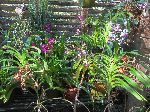



 |
||

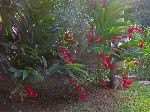

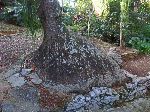
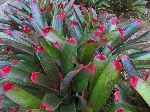 |
||


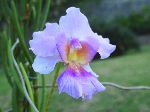
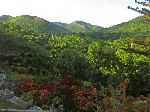
 |
||
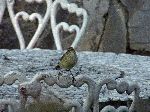
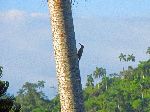
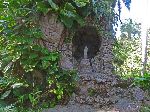
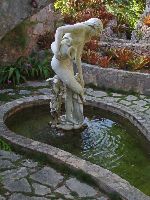 The
estate also includes a modest, but ornate, house, and an extensive specialized
library on orchids and other ornamental plants: It is considered to be
the richest, most varied and up-to-date collection of its kind in the country.
The house is surrounded by structure garden, which has attracted the
attention of a variety for the quality of life it provides them. The
estate also includes a modest, but ornate, house, and an extensive specialized
library on orchids and other ornamental plants: It is considered to be
the richest, most varied and up-to-date collection of its kind in the country.
The house is surrounded by structure garden, which has attracted the
attention of a variety for the quality of life it provides them. |
||
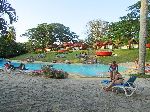 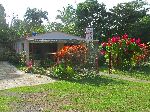 Near
by is the Soroa Hotel (left), with a pool. But for those who want a bit more of
a Cuban experience there are also several dozen casa particulars
(below) in the area. Most casas have private bathrooms with each bedroom,
they provide all the linens and main toiletries, and will cook as many custom
prepared meals as their guest request. Near
by is the Soroa Hotel (left), with a pool. But for those who want a bit more of
a Cuban experience there are also several dozen casa particulars
(below) in the area. Most casas have private bathrooms with each bedroom,
they provide all the linens and main toiletries, and will cook as many custom
prepared meals as their guest request. |
||

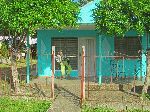

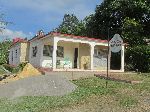  |
||
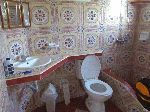
   Typical
of the casa particulars, in ours, each room had a private bathroom, with
hot and cold water, and delicious meals (I neglected to photograph the majority
of them.). The family lived downstairs and was around to talk to. Typical
of the casa particulars, in ours, each room had a private bathroom, with
hot and cold water, and delicious meals (I neglected to photograph the majority
of them.). The family lived downstairs and was around to talk to. |
||
   It
seems that the preferred rest position for Cuban dogs is on their side with
their legs stretched (left). We easily passed a hundred dogs like this before it
seemed important enough to photograph a couple. Not much will rouse a Cuban dog
from its relaxation -- not even a bicyclist. It
seems that the preferred rest position for Cuban dogs is on their side with
their legs stretched (left). We easily passed a hundred dogs like this before it
seemed important enough to photograph a couple. Not much will rouse a Cuban dog
from its relaxation -- not even a bicyclist.It turns out that some Cuban horse prefer to sleep in the same position (right). |
||
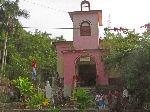 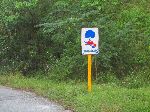  Up
the road from the
Orquidearo and hotel is another piece of the scattered Soroa community. Here
there is a former church that has been repurposed as a primary school (left). Up
the road from the
Orquidearo and hotel is another piece of the scattered Soroa community. Here
there is a former church that has been repurposed as a primary school (left).Out of Soroa, there are many kilometers of greenery of the Sierra del Rosario Biosphere Reserve. The winding, low-traffic road between Soroa and Las Terrazas is as nice as they come. |
||
|
|
||
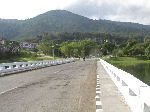 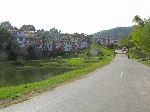 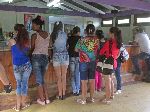 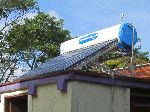 Las
Terrazas is distinguished by a lot of green, higher density housing and solar
systems. but the local shops is undistinguished for those elsewhere. Las
Terrazas is distinguished by a lot of green, higher density housing and solar
systems. but the local shops is undistinguished for those elsewhere. |
||
|
Cafetal Buenavista, built in 1801, built by French refugees from Haiti, is Cubaís oldest coffee plantation. It is now restored and can be toured. The plantationís master house is now a restaurant. The tree to the right is the Bursera Simaruba. The guides at the botanical gardens like to call it the tourist tree because a dry, paper-thin, redish outer-bark peels off the trunk, like a sunburned tourist might peel. |
||
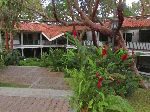  The
very beautiful hotel, set at the top of the hill, in Las Terrazas, is the Moka
Hotel. In high season, a double room costs about US$200 a night. It is some
conciliation that the price includes
breakfast. The
very beautiful hotel, set at the top of the hill, in Las Terrazas, is the Moka
Hotel. In high season, a double room costs about US$200 a night. It is some
conciliation that the price includes
breakfast. |
||
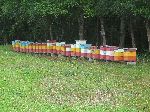 Just
as the people of Pinar del Rio have a preference for colorful abodes, someone
has decided that the honey bees do as well. Very tasty honey is available in
the markets in the region and is frequently on the table at casa
particulars in the province.. Just
as the people of Pinar del Rio have a preference for colorful abodes, someone
has decided that the honey bees do as well. Very tasty honey is available in
the markets in the region and is frequently on the table at casa
particulars in the province.. |
||
|
|
||
    |
||
|
"Hosted by
DreamHost - earth friendly web hosting"
|
||
|
|
|
